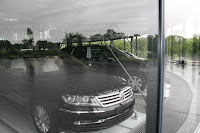At 8.00 a.m. we had an one hour tour with Cornelia Reimann at the town’s landmark, the famous “Frauenkirche” of Dresden. We climbed up to the top of the church and learned some facts about the architectural style the historical background of the rebuilding and the long tradition of the church.

 Following Cosima Curth guided us through other parts of Dresden and we were shown the most important points of interest of that old and history-charged town. For instance, we saw the “Semperoper”, the “Fürstenzug” or the “Taschenbergpalais“. A further stop was at the artwork of Vinzenz Wanitschke that shows the universe with its planets which should remind us of the bastions of the fortification of Dresden.
Following Cosima Curth guided us through other parts of Dresden and we were shown the most important points of interest of that old and history-charged town. For instance, we saw the “Semperoper”, the “Fürstenzug” or the “Taschenbergpalais“. A further stop was at the artwork of Vinzenz Wanitschke that shows the universe with its planets which should remind us of the bastions of the fortification of Dresden.Mrs. Curth added some funny slogans with her howe-grown Saxon accent and answered our questions to the town. The tour ended at the “Zwinger” of Dresden.

 |
| VW Phaeton |
We returned to our accommodation the “Cityherberge” and left it again at about 11 a.m. for the next visit at the “Gläserne Manufaktur” of Volkswagen. After we were split up into two groups we were guided through the whole manufacturing halls and could get an impression of how complex the car constructions of the “Phaeton” are. Moreover we could notice that VW does a lot for the health of their employees, as they have parquet floor in the manufacturing halls or relieving instruments for the installation, for example.
 |
| Gläserne Manufaktur |
It was an amazing Summer School with lots of interesting visits, a full programme, less sleep and great people!
A special thanks to Mrs. Ling, she made all these photos!

























